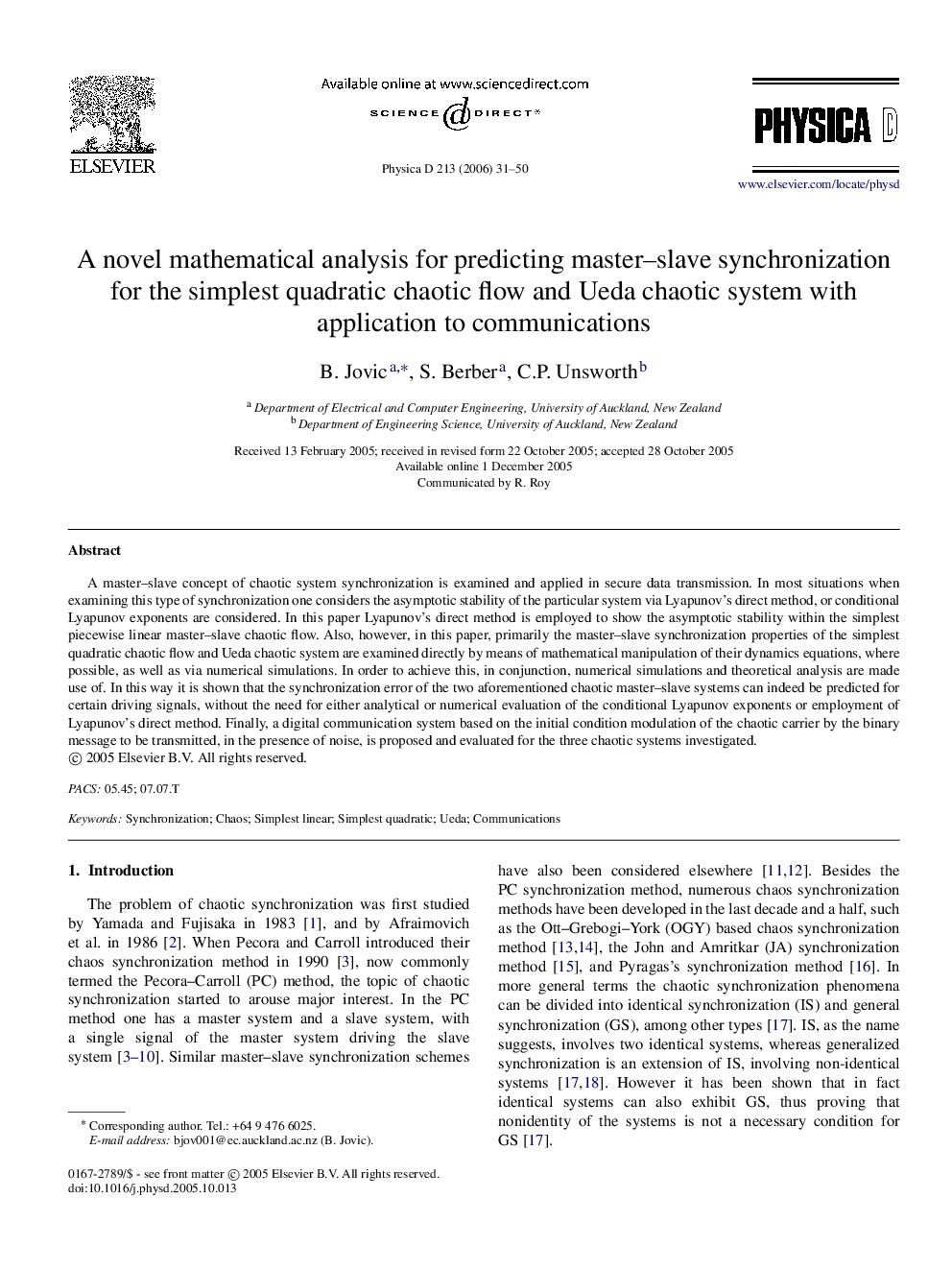| Article ID | Journal | Published Year | Pages | File Type |
|---|---|---|---|---|
| 1899138 | Physica D: Nonlinear Phenomena | 2006 | 20 Pages |
A master–slave concept of chaotic system synchronization is examined and applied in secure data transmission. In most situations when examining this type of synchronization one considers the asymptotic stability of the particular system via Lyapunov’s direct method, or conditional Lyapunov exponents are considered. In this paper Lyapunov’s direct method is employed to show the asymptotic stability within the simplest piecewise linear master–slave chaotic flow. Also, however, in this paper, primarily the master–slave synchronization properties of the simplest quadratic chaotic flow and Ueda chaotic system are examined directly by means of mathematical manipulation of their dynamics equations, where possible, as well as via numerical simulations. In order to achieve this, in conjunction, numerical simulations and theoretical analysis are made use of. In this way it is shown that the synchronization error of the two aforementioned chaotic master–slave systems can indeed be predicted for certain driving signals, without the need for either analytical or numerical evaluation of the conditional Lyapunov exponents or employment of Lyapunov’s direct method. Finally, a digital communication system based on the initial condition modulation of the chaotic carrier by the binary message to be transmitted, in the presence of noise, is proposed and evaluated for the three chaotic systems investigated.
